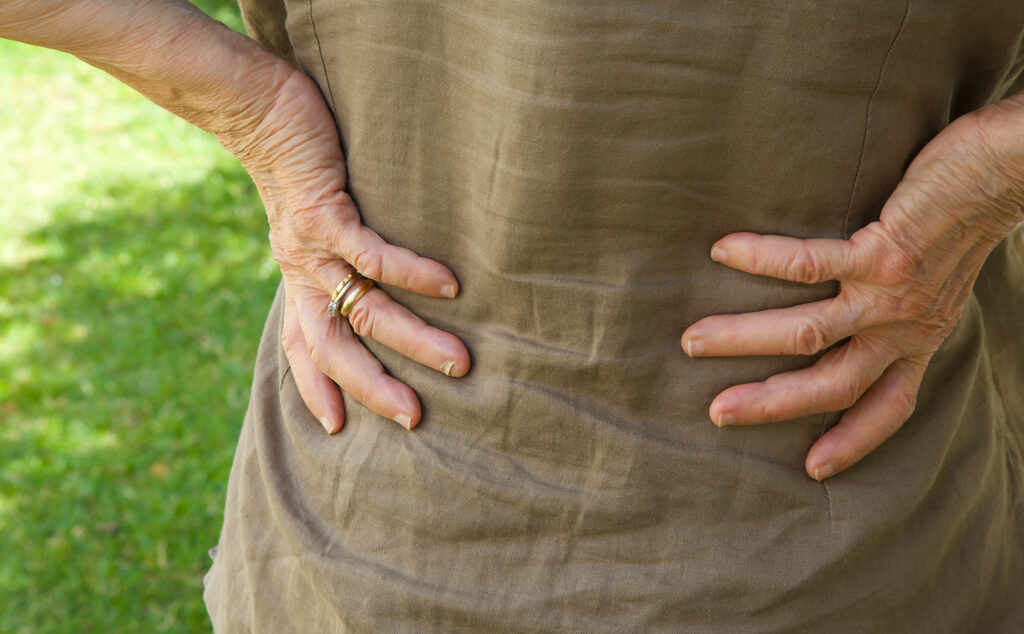By: Sergio Soriano Solis
ABC Medical Center Orthopedist
Overview
Back pain or low back pain is the main cause of physical limitation and work absenteeism in a great part of the world, imposing a great economic burden on individuals, families, communities, industry, and governments. In the UK alone, low back pain was identified as the leading cause of disability in young adults with more than 100 million working days lost per year.
According to the World Health Organization (WHO), in developing countries, between 60% and 70% lifetime prevalence of nonspecific (common) back pain is estimated.
What causes back pain?
There are multiple anatomical structures capable of generating back pain, these include muscles, connective tissues, ligaments, joint capsules, cartilage, intervertebral discs, and nerves. During daily life activities (exercise, carrying objects, sports, among others) these structures can be pulled, stretched, or strained.
Sometimes small tears occur in the fibers of the outer layer of the intervertebral disc (fibrous ring) causing severe pain. Many people experience pain due to an abnormal disc that is degenerating, bulging, or even herniated. Although the tissue damage is considered minor and capable of repairing itself, pain intensity can be quite severe.
There is often a chain reaction that contributes to pain. In the body, numerous chemicals are released in response to tissue irritation or injury. These substances stimulate pain-sensitive nerve fibers, resulting in the sensation we know as pain. Some of these substances trigger the process of inflammation, or edema, which also contributes to pain. The chemical substances associated with this inflammatory process send more signals, continuing the inflammation process, prolonging the pain for days or weeks.
How long does a back pain episode typically last?
In general, there are three types of pain: acute, chronic, and recurrent acute.
Although the origin of the pain is not initially determined, it is common for acute pain to subside in a month or less as the injured tissues heal. In general, 80% of low back pain disappears within six weeks.
Chronic pain is generally described as pain that lasts for months and is often less related to tissue injury, implying a more chronic spine condition that requires more attention and involves other associated factors such as muscle weakness, overweight, or obesity, among others.
Recurrent acute pain is intermittent, meaning it comes and goes from time to time. Generally, this type of pain is due to chronic spinal conditions that follow this pattern.
When to go to the spine specialist?
Any progressive pain, that is, that increases in intensity or that lasts more than two weeks or does not subside with conventional measures and painkillers and rest, should be evaluated by a spine specialist. On some occasions, patients may experience severe disabling pain, which is reason enough to seek help from a specialist. Also, it is advisable to seek specialized attention if the pain radiates to the legs, especially below the knee, presents numbness or tingling, or is accompanied by weight loss.
If, in addition to back pain, you have acute constipation, fecal or urinary incontinence, fever, or severe acute pain associated with a back injury (fall, accident, or blow), it is advisable to attend to it immediately, since these symptoms are associated with more serious conditions that can compromise nerve function or your back stability.
At ABC Medical Center’s Orthopedics and Traumatology Center, we can provide you with specialized care. Contact us!
Fuentes:
https://www.ninds.nih.gov/archived/low-back-pain-fact-sheet
https://www.mayoclinic.org/diseases-conditions/back-pain/symptoms-causes/syc-20369906
https://www.spine.org/Portals/0/Assets/Downloads/KnowYourBack/BackPainBasics.pdf


